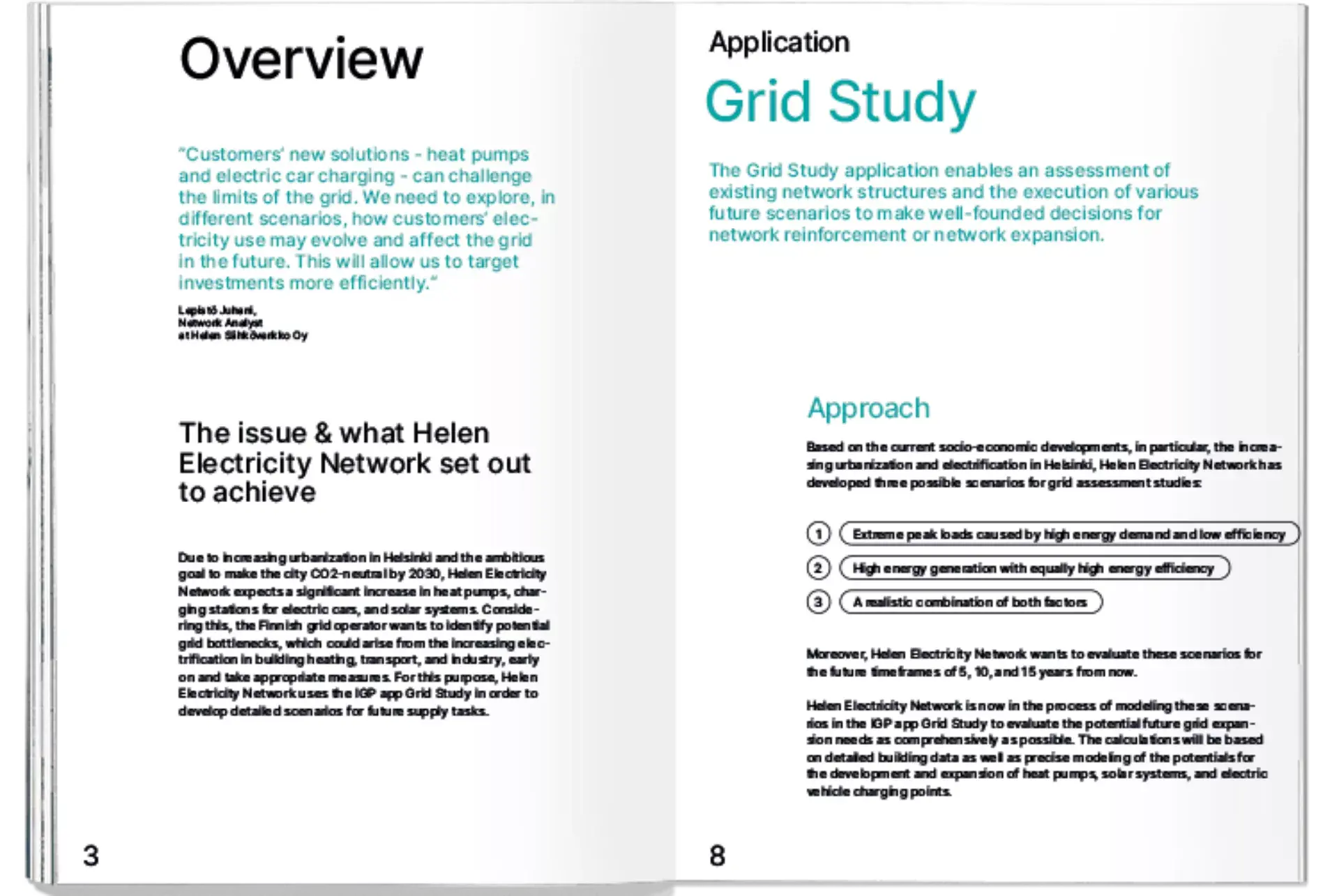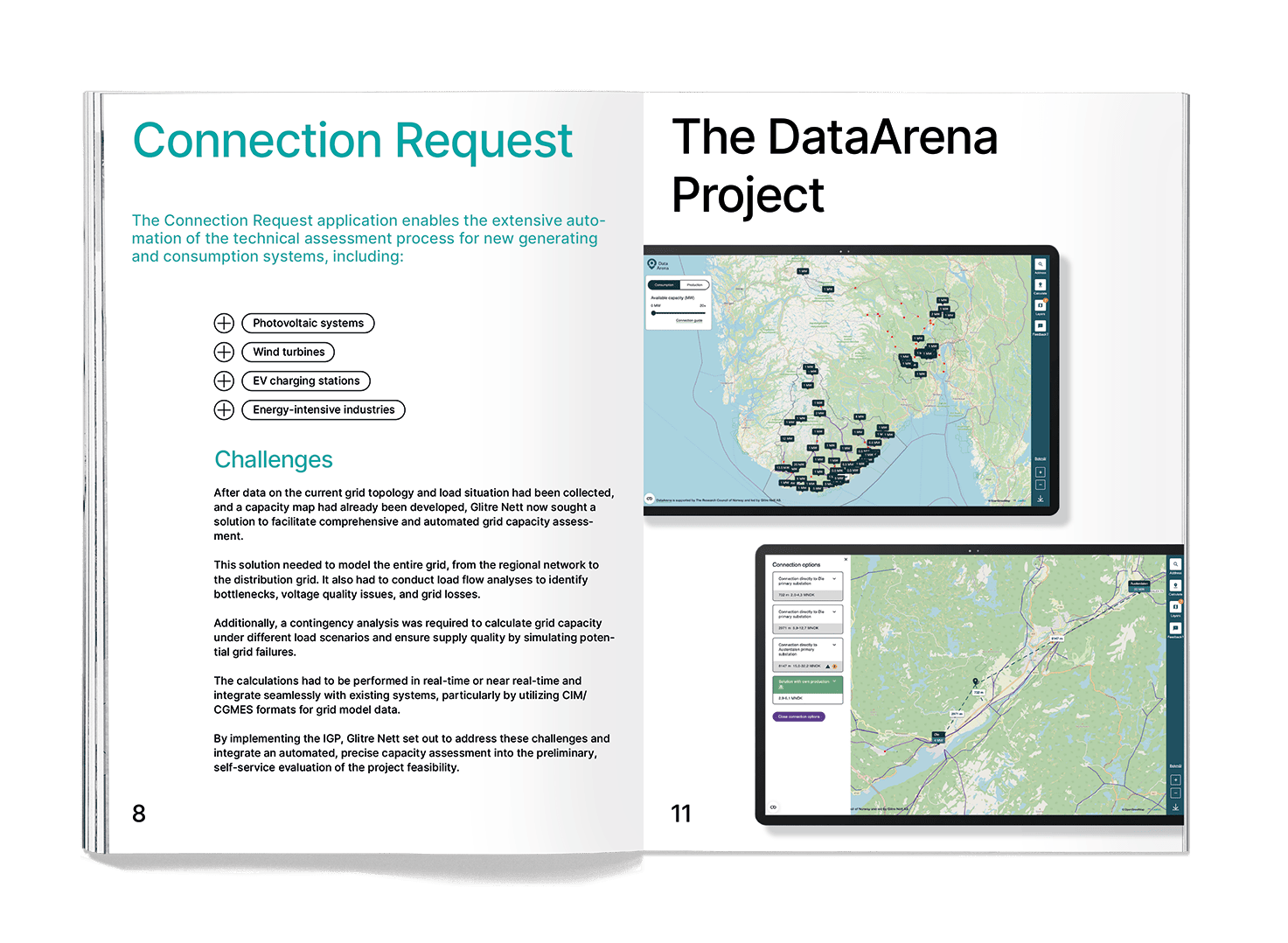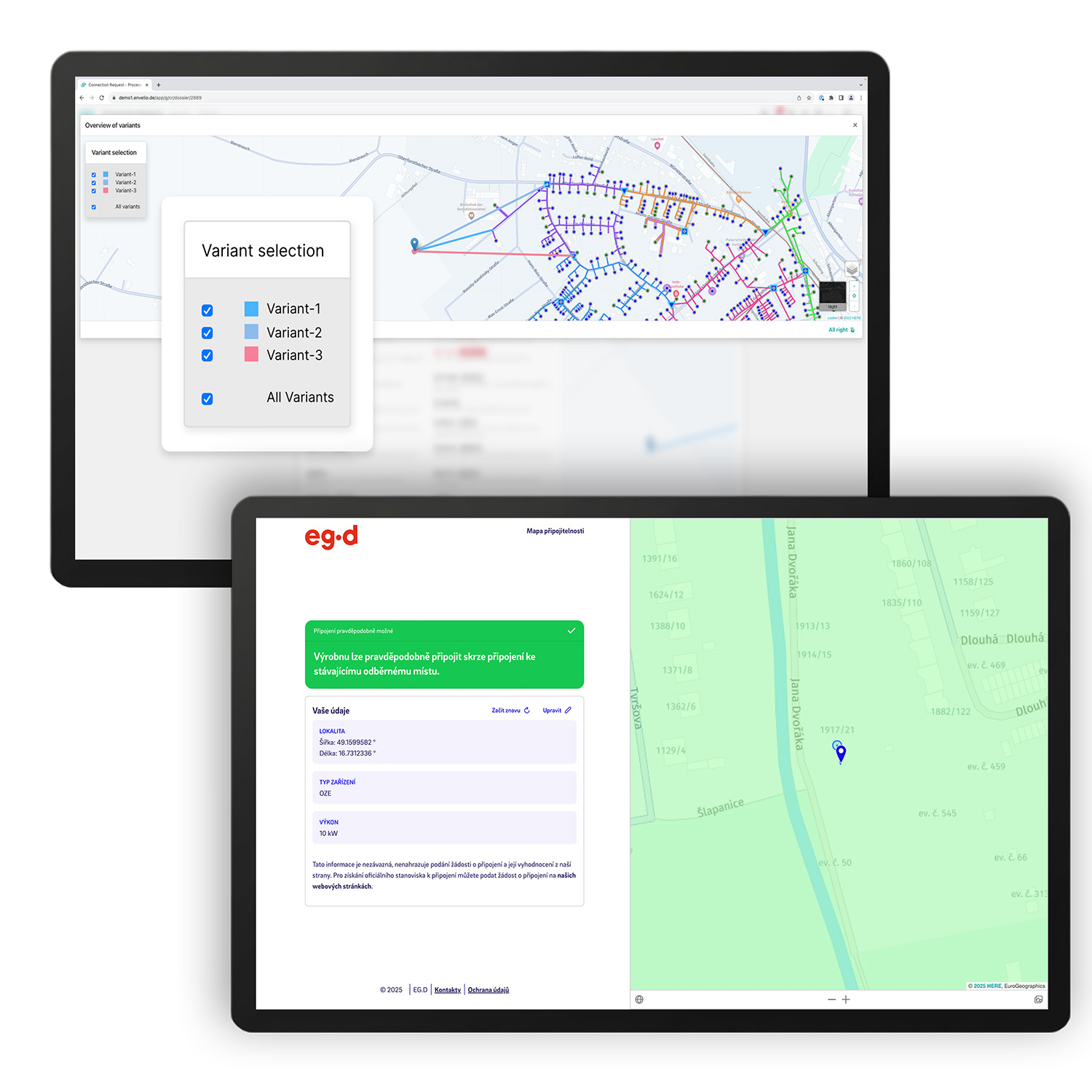.png) Play Video
Play Video
Effective Network Development
Plans Require Valid Grid Studies
and Investment Planning

Norway is experiencing an unprecedented wave of electrification, expected to increase electricity consumption by 80 TWh by 2050. Key drivers include industrial decarbonization, hydrogen production expansion, and the growth of energy-intensive sectors such as battery factories and data centers.
At the same time, renewable energy is experiencing virtually unlimited growth. But how will these new generation units and loads impact the grids? Are the capacities of the installed assets sufficient? Where are bottlenecks likely to occur? Where, when, and how can the grid be reinforced as cost-efficiently as possible?
To answer these questions reliably and future-proof the grid, a robust strategic grid planning process is essential. This includes:
- Developing scenarios for future supply tasks
- Assessing the concrete impact on the grid
- Creating an investment plan for the grid
NIS “on steroids”: How DSOs Can Unlock More from Their Grid Information System Data
Helen Group, a major player in the Finnish energy sector, is responsible for providing energy and heating services in the Helsinki region. Like many other European countries, Finland is increasingly focusing on the decarbonization of the transport and building sectors, leading to a rapid growth in EV charging points and heat pumps.
This requires a high level of grid transparency and the automation of several grid planning processes, such as long-term load forecasts, short-term grid connection evaluations, and grid planning projects. These tasks are often cumbersome and time-consuming with existing systems.
In the project with Helen, full models of the regional and local distribution grids were prepared in the envelio IGP. Data from the NIS (Network Information System) was integrated and combined with information from the MDMS (Meter Data Management System) to include time series and smart meter data in the planning processes. The entire onboarding and interface development was managed by envelio’s data engineering team with minimal effort required from Helen. Another key feature of the Intelligent Grid Platform (IGP) is the ability to perform N-1 contingency analysis.
Case Study: Helen Electricity Network
Running future grid scenarios to determine the probability of bottlenecks
Helsinki aims to become emission-free by 2030, necessitating a major transformation of its energy systems. This presents challenges for the power grid, requiring a thorough understanding of the impacts of these changes. Using the IGP app Grid Study, Helen Electricity Network is modeling three potential future grid scenarios. These scenarios, reflecting current and projected socio-economic developments, will help determine grid needs over the next 5, 10, and 15 years.

”This will allow us to target investments more efficiently.“
”Customers‘ new solutions - heat pumps and electric car charging - can challenge the limits of the grid. We need to explore, in different scenarios, how customers‘ electricity use may evolve and affect the grid in the future. This will allow us to target investments more efficiently.“
Juhani Lepistö
Network Analystat Helen Sähköverkko OyCase Study: Glitre Nett
Automated grid capacity assessment: How Glitre Nett improves connection processes
with DataArena and the IGP
To handle grid connection requests more efficiently, Glitre Nett launched the DataArena project – a hosting capacity map for self-service capacity checks. While the map had already been developed by the Norwegian DSO, it lacked an automated method for calculating grid loads and identifying suitable connection points.
With the help of the IGP, Glitre Nett implemented this functionality, enabling load flow analyses that also include contingency evaluation. This has reduced the number of inquiries, minimized manual processing, and eased the workload of grid operators.
A key feature of the Intelligent Grid Platform (IGP) is the ability to perform N-1 contingency analysis.
Also, discover how Glitre successfully implemented a digital twin of their grid in the IGP, based on data from their Network Information System (NIS).

New Obligations for DSOs in Norway
Area Studies, Analyses and Measures
Since March 2024, under the “Forskrift om energiutredninger”, Norwegian DSOs are obligated to digitize their network development plans and continuously upload them to the web-based PlanNett platform. The planning horizon is 5 to 10 years for regional and local distribution grids.
PlanNett aims to provide accessible insights into ongoing grid projects. Information is structured into three phases, reflecting the grid development process from needs analysis to commissioning:
- Area Study: A study of the condition of the power grid, and what problems or needs exist for an area. (Planning)
- Concept evaluation study: An investigation of various network solutions that can solve network needs. (Planning)
- Projects that grid companies will carry out, usually network development. The measures usually require permission from NVE (licensing authority) before construction. (Measures)
Long-Term Planning and Scenario Analysis: Key Challenges for DSOs
The ability to create and simulate scenarios is becoming essential for Norwegian DSOs, especially for consistent investment planning. However, many DSOs face challenges due to insufficient data or lack of tools to evaluate existing data. The main barriers include:
- Poor data quality on grid infrastructure and customers
- IT system silos with little communication or integration, requiring manual data transfers
- Inconsistent use of available sensor data in simulations
- Limited ability to run mass simulations across networks and scenarios
- Failure to account for changes in user behavior due to flexible loads and dynamic tariffs
Additionally, traditional NIS and grid calculation tools lack sufficient capability for comprehensive scenario analyses, making it nearly impossible to simulate widespread structural impacts in detail.
Current methods can evaluate only a few scenarios and involve significant manual effort. This makes it difficult — or even impossible — to analyze the impacts of new connection types (DER, storage, etc.) and the role of flexibility in grid development.
More than 50 % investment savings

“Insights from our customer projects indicate that deploying smart grid assets can reduce investment expenditures by as much as 50 % compared to traditional grid expansion.”
Dr. Tobias Falke
VP Global Sales & Marketing envelioReliable Grid Development Requires Valid Grid Studies and Investment Planning
To maintain long-term technical reliability, future-oriented strategic grid planning and well-founded investment forecasts are essential. Investment planning must clarify where and when reinvestments are necessary and what the electrification costs will be with and without load control.
These decisions rely on evaluating future supply scenarios. The envelio Grid Study app addresses this exact challenge: it enables you to easily create a variety of detailed scenarios for future supply tasks.
With the app, you can integrate different trend scenarios into your grid model and precisely determine future reinforcement or expansion needs.
Grid Study: Build a Better Basis for Your Network Development Plans through Easy Evaluation of Future Energy Scenarios
Another key feature of the envelio Grid Study app is the ability to carry out detailed stress tests and scenario analysis for your grid area. Create various scenarios for future supply tasks in just a few steps.
Have your forecasts automatically projected onto your own grid area and determine the effects of newly added charging stations or decentralized generating plants. Use the results to identify potential grid bottlenecks and optimize your strategic grid planning.
.png) Play Video
Play Video
Webinar: Cutting grid connection costs & time by 40%: How EG.D streamlines processes with envelio
Exclusive insights for distribution grid operators
Join this exclusive webinar with Michal Holan and Tomas Mendl from EG.D, alongside Christine Harnischmacher from envelio, as they share their experiences optimizing grid connection processes through digitalization.
Learn how they approached automation, reduced workload, and improved response times – all while maintaining operational efficiency.

FAQs
What is Strategic Grid Planning?
Strategic grid planning refers to the phase where decisions are made about which actions are needed to prepare the grid for future requirements. It includes power flow simulations, scenario analyses, and investment assessments.
What is a Scenario Analysis?
Scenario analysis is the structured examination of potential future developments and their effects on the power grid. Different trends – such as the rollout of PV systems, heat pumps, or EV charging infrastructure – are modeled and simulated to evaluate their impact on grid stability and capacity.
What is Investment Planning?
Investment planning involves determining when and where to invest in the grid based on scenario analyses and grid study results. It considers timing, costs, benefits, and urgency to make efficient investment decisions.
What is the difference between Grid Planning and Grid Development?

Grid planning refers to analysis and decision-making for future grid needs.
In short:
Planning = Thinking and Deciding

Grid development is the execution of these decisions – i.e., constructing, reinforcing, or upgrading the infrastructure.
In short:
Development = Doing and Building
Do you have any questions?
In this case, we look forward to getting to know you and answering all your questions about our product and our company. On top of that, you’ll be able to already experience our platform live.
Don’t forget to send your request for a quick demo today.
Contact person
Dr. Tobias Falke
VP Global Sales & Marketing


